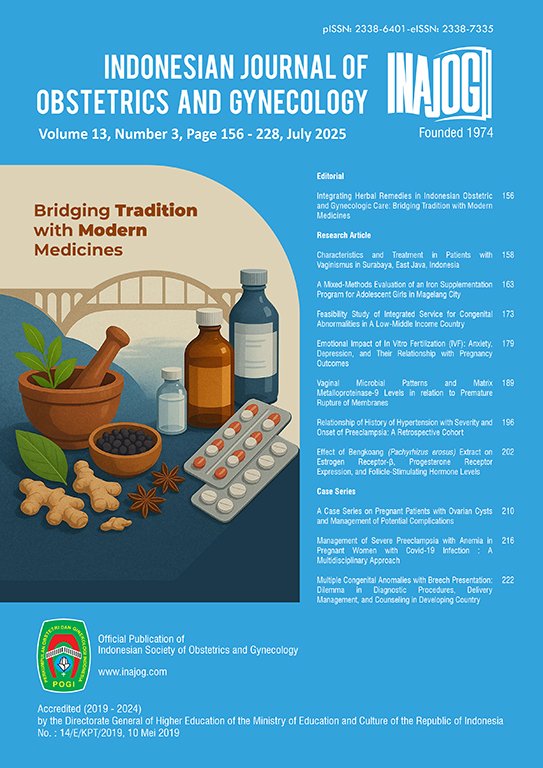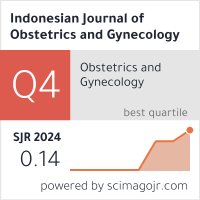Vaginal Microbial Patterns and Matrix Metalloproteinase-9 Levels in relation to Premature Rupture of Membranes
Abstract
Introduction: The premature rupture of membranes (PROM) before the onset of labor, characterized by the painless leakage of fluid from the vagina, can lead to fetal distress and increase the risk of cesarean section. This study analyzed the microbial patterns and matrix metalloproteinase 9 (MMP-9) levels in cases of PROM.
Methods: This was an observational study with cross-sectional design. Samples were collected from 60 pregnant women diagnosed with PROM who underwent examination and treatment at St. Khadijah I Hospital in Makassar in November 2023. Statistical analysis was performed using the Independent Samples T-Test for microbial patterns and MMP-9 levels.
Results: The MMP-9 level in PROM group was significantly higher (1706,78 ± 386,36) compared to non-PROM group (1328,20 ± 1556,22) with p = 0.006. For microbial pattern, E. coli was the predominant bacteria in PROM group (72,0%) compared to non-PROM group (28,0%) with p = 0.004.
Conclusion: The results of this study indicate that high MMP-9 level and predominant E. coli presence in the vaginal swab may increase the risk of PROM.
Downloads
Copyright (c) 2025 Indonesian Journal of Obstetrics and Gynecology

This work is licensed under a Creative Commons Attribution-NonCommercial-ShareAlike 4.0 International License.













